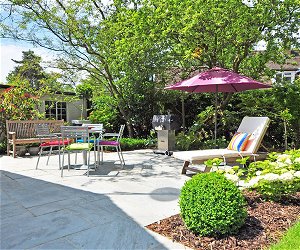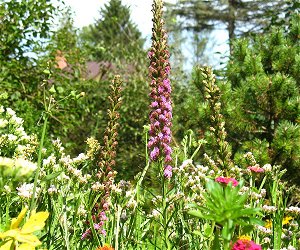Here you go. Remember to let us know how you go on.
Notes:
Recipe ingredients and quantities vary an awful lot, so I ended up just doing my own thing. For future bakes I'll probably experiment with adding other ingredients - apple, onion, haggis, etc.
The herbs and spices I added gave a subtle extra flavour we both really liked, but this is something you can modify as you like. Next time I'll keep the same items and quantities, but I'll also add a little bit of anchovy essence or crushed anchovies and see what that does.
The following quantities, making 5 individual pies, resulted in 255g of pastry left over. So you can reduce the pastry quantities or, better, increase the quantity of meat.
The meat I used came from Mercadona - can't remember the packet size but it would have been about 600g. When I make the next batch, I'll see if I can find shoulder (aguja). You could also use minced pork, but the filling might then be too dense to absorb the jelly.
The lard also came from Mercadona, and is found in the meat aisle (in our Mercadona at Almoradí).
For the filling:
500g spare ribs meat (costillas carnosas)
¼ tsp dried sage
¼ tsp ground allspice
¼ tsp dried thyme
¼ tsp ground nutmeg
¼ teaspoon ground mace
salt and freshly ground black pepper
Remove the meat from the bones and dice the meat fairly finely.
Thoroughly mix in all the other ingredients, and cover the bowl and preferably chill overnight for the flavours to develop.
For the pastry:
500 g plain flour
¼ tsp salt
220 g lard
130 ml water
Sift the flour into a large bowl and season with salt and mix well.
Gently heat the lard and water together until the lard has melted - depending on how hot your hob is, it may well come to a boil, and this is OK.
Pour immediately into the well in the flour and draw the ingredients together with a wooden spoon to form a soft, pliable ball of dough. Don't worry if it looks a mess to begin with, as it will come together as you beat.
Turn on to the worktop and knead it until it all comes together without cracks or air in it. Don't over-knead your pastry ? it's not bread.
Then form into a ball, and leave in the fridge overnight if you wish; alternatively you can use it immediately once it's cool enough.
Assembly:
1 beaten egg, to glaze
You can use a proper dolly, a jam jar, or a glass tumbler as a former. I used glass jars: Baxter's redcurrant jelly, Heritage Dijon mustard, Mercadona's green peppercorns etc. are all a suitable size.
For each former, smear spread around its outside edge and bottom, and then roll it in flour. Alternatively cover with cling film (as I did), after greasing the mould. This is to prevent both the pastry and clingfilm from sticking too much.
First take a bit of pastry and knead it a little to make sure it's pliable and doesn't crack when manipulated, then roll out to a rough round of 4 or 5 mm thickness. Err on the side of too big, because you'll be trimming it. Take care not to overwork the pastry.
You can put your bit of pastry on the worktop and draw the pastry up the sides, or do as I did and put your former upside down on the worktop and push the pastry down.
Squeeze the pastry with your hands and at the same time work the pastry down and around the body of the former. The pastry should have a regular and even thickness all the way round.
Then trim it with a knife to the size you want.
All the recipes I looked at said to remove the pastry from the former at this stage, but even with clingfilm or flour, it's reluctant to come off, so it deforms and you have to reshape it once off. Then you have to go round the top with a pair of scissors to tidy it up. It was only when I did the last pie that I found the way that works best for me.
I found the cases are easiest to remove, and to fill, if you chill them in the freezer until nearly frozen - they're then much easier to take off without deforming; the only disadvantage is that you have to let them defrost a bit before you can fit the lids - but it's well worth the wait. Make certain there are no holes or tears. This is crucial, or the jelly will leak out.
Final assembly:
If you want a break, put the cases in the fridge to rest.
Roll out the topping pastry to the required thickness. Cut some discs for the lids using a glass or biscuit cutter that is a slightly larger diameter than the pie. Set aside.
Roll some of the meat into a ball and carefully place into the bottom of the pastry case, moulding the sides to the meat to ensure no air remains in the body of the pie. Add more, carefully pressing it down and into the sides. It should come almost to the top of the pastry.
Brush the top inner parts of the pastry casing with some of the beaten egg and place the pastry circle on top.
Pinch the edges of the pastry to seal the pie, making sure the rim of it points upwards. Ensure the lid is very securely sealed to the pastry case otherwise the sides will collapse during baking. Create a crimped finish to the top of the pie.
I found it best to have my thumbs on the outside and use my fingers to press it together and lift up the edge, then fold the top bit over outwards. Tidy up the overall shape, then use a knife at a 45º angle to press on the rim every few mm, to give the crimped appearance.
When the meat is in and the pie lid is sealed the pie takes on a far more rigid integrity, which is much easier to work and shape if you want to tidy up its appearance.
Lightly brush the top of the pie (not the crimp) with egg and make a hole in the lid, about 5mm in diameter, to let out the steam.
Re-roll any pastry trimmings and cut out diamond-shaped leaves to decorate the lids, if you wish to do so.
Chill the pies for at least 1 hour in a fridge or, for best results, overnight.
Baking:
The pies are baked without any support to their sides, which means they will bow outwards during cooking. If you have any doubts about the pies collapsing once they go in the oven, you can support them with well-buttered steel rings. Alternatively you can put them close to one another in a baking tin, so they can 'lean' on one another for support.
Preheat the oven to 200°C.
Place the pies on a baking sheet or tray.
Bake for 15 minutes.
Reduce the oven temperature to 160°C and bake for a further 1¾ hours, if necessary covering the top of the pie with a piece of foil or greaseproof after an hour to prevent over-browning the crust (wasn't necessary with my oven).
If you are using some kind of ring to support your pie, remove it after half an hour to allow the sides of the pie to cook.
After 1¾ hours remove the pie from the oven, brush the sides and top with some more beaten egg, and return to the oven for 15 minutes, to make them look nicer.
When baked, remove from the oven and allow to cool slightly.
For the jelly:
Whilst the pies are baking, prepare the jelly. The following wasn't quite enough for 5 individual pies, so factor up next time.
300ml boiling water
¼ chicken stock pot
1 bouquet garni
¼ tsp thyme
¼ tsp sage
1 large or 2 small sheets of leaf gelatine (I used 2 leaves Supercook platinum)
In a saucepan add in all of the ingredients except for the gelatine leaves. Stir, making sure the stock pot dissolves, and bring up to a simmer. Once the stock is just under the boil turn the heat down and simmer gently, without the lid on, for twenty minutes.
Then strain through a fine strainer, and put back into the pan.
Soak the gelatine in some cold water for a few minutes, then remove the gelatine from the water and squeeze to remove excess liquid, and stir into the stock to dissolve. The hot liquid should not be boiling when the gelatine is added or this will prevent the gelatine from setting properly.
Once dissolved turn the heat off.
The stock on cooling will set into a jelly, so use it while still warm and liquid. If it sets before using just gently warm it back up and stir.
Finishing off:
When the pies have cooled a bit, pour the stock into a jug and then pour it carefully through the holes in the top of the pies. A funnel is useful.
Once poured, let it settle for 20 minutes, then pour in a little more stock for a second time if it needs it.
Cover the pies and leave in the fridge for several hours or overnight, for the jelly to set and the pie to firm up.
Remove from the fridge at least an hour before serving.
Eating:
We ate our first two cold, with some of those long thin potatoes you do in the deep-fat fryer. The next two we'll try warming, which will obviously liquify the jelly, but that shouldn't be a problem except that the chips might get soggy.
Enjoy!























 Register now for free to talk about General La Marina discussion and much more!
Register now for free to talk about General La Marina discussion and much more!












